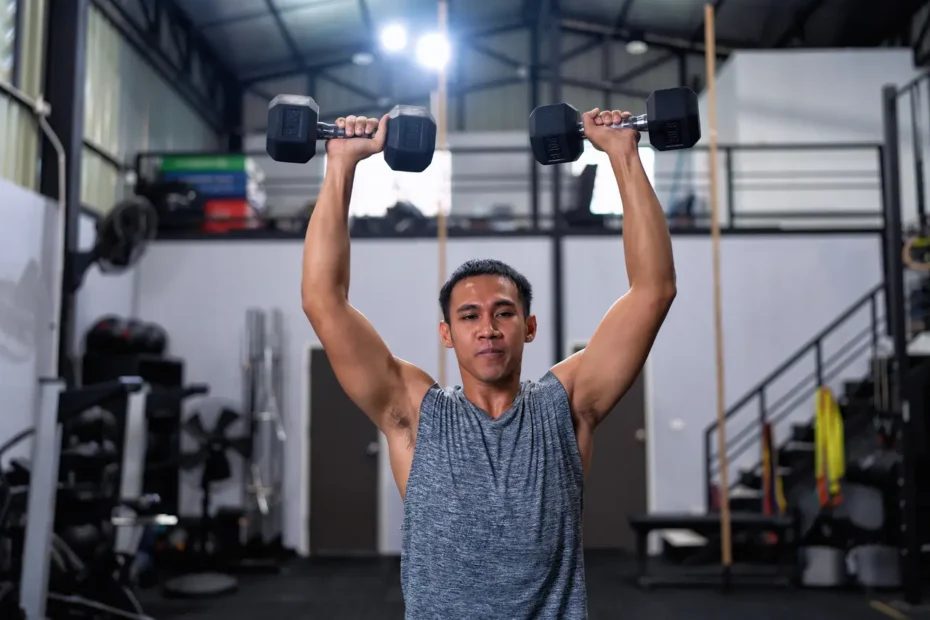The serratus anterior plays an integral part in shoulder health and mobility. Weaknesses in this muscle may result in scapular winging, leading to pain during overhead movements or leading to poor posture overall.

These exercises will provide your small muscles with an incredible workout. Use them in combination with other core and shoulder-centric bodyweight exercises for maximum effect.
Push-ups
The serratus anterior muscle is an integral component of shoulder stability, playing an essential role in protracting or moving shoulder blades forward. Any inability to perform its movement may lead to shoulder, neck and back pain as well as issues with rotator cuff function and/or winging of the scapula (such as that seen on Joaquin Phoenix in Joker). Luckily for us all though, strengthening it with simple bodyweight exercises requires no special equipment at all!
Push-ups are one of the most beloved and effective serratus anterior exercises. This bodyweight exercise can easily adapt to fit the needs and abilities of all users.
Standard push-ups are an excellent starting exercise and can be made more challenging by altering their positioning on the ground, such as further apart or closer together, to increase shoulder load and better target the serratus anterior muscle.
An effective modification to the push-up involves placing your feet on a bench or wall and performing push-ups with legs in the air – this movement targets not only serratus anterior muscle activation but also lower trapezius activation.
For advanced push-up variations, add instability and challenge your balance by anchoring your hands with a mini loop resistance band. Doing this forces you to work harder by having to balance yourself in an unstable position while engaging more of the serratus anterior muscle.
If you want a more challenging push-up exercise, try anchoring the mini loop resistance band slightly higher up so that it forces you to press up and down as well as protract your scapula, increasing its challenge while developing greater shoulder stability.
As you become more experienced, gradually reduce the support your hands are receiving from the band. Take it slowly and don’t overdo it.
Stretching is another effective way to strengthen and retrain the serratus anterior muscle. According to Chris Jarmey’s The Concise Book of Muscles, stretching is especially essential if your activity involves repetitive overhead shoulder motions like swimming or tennis. In addition, now is also an ideal time to begin doing other shoulder and upper back strengthening exercises such as dumbbell serratus punches and bench presses to further hone this area of muscle strength.
If you have shoulder, wrist or elbow injuries, it is recommended to seek advice from both a doctor and physical therapist prior to beginning any strength training regimen. A physical therapist can assist in designing an appropriate training program designed to build the strength of serratus anterior muscles as well as other shoulder muscles; they may advise on equipment/modalities/tempos/set and repetition ranges specific to your goals as well as suggest any exercises which might benefit your injury or condition.
Overhead Presses
The Overhead Press (also referred to as shoulder press or military press) is an essential strength training exercise that targets shoulders, arms and chest muscles. This movement involves lifting a barbell from shoulder height up overhead; using proper form when performing Overhead Presses will prevent shoulder pain or injury caused by improper form. This guide will teach you how to perform Overhead Presses correctly so you can strengthen your shoulders without incurring injuries.
One of the key drawbacks of traditional overhead presses is their ineffective training of the serratus anterior muscle, which only gets activated during short ranges of arm elevation – meaning it doesn’t get trained as effectively as it could. Most people only lift their arms up until their fingers can no longer reach them, which restricts how much force is applied to the upper back – something you want when pressing overhead.
As an added benefit, scapular stabilizing muscles are also being strengthened as you lift your arms over your head; as the glenohumeral head of the shoulder blade moves with this movement. This ensures that when pressing, your humerus doesn’t extend beyond your elbows and pinch structures in your rotator cuff – such as bursae and tendon – and lead to pain or damage.
To maximize its effectiveness in strengthening your serratus anterior, it’s crucial that you take your time and make sure everything is tight. Many people rush through this exercise and end up pin-pointing their shoulders down which reduces how much weight can be pressed while increasing their risk of injury.
When practicing the Overhead Press, make sure your head remains neutral (not tilted to one side or forward). Instead, focus on looking through a mirror at a wall or fixed point in front of you – this will help maintain spine and scapula stability during each press exercise.
Use of a resistance band during an Overhead Press will engage and strengthen serratus anterior and other rotator cuff muscles, increasing strength, activation and endurance. A resistance band also reduces how much force must be applied when performing this movement, making it possible to increase load without increasing risk of injury.
The Bottom Up Wall Slide
This variation on the traditional wall slide provides a great alternative in engaging serratus anterior and other scapular stabilizers without raising your arms above your head, while its top down position causes less strain to be placed upon rotator cuffs and other muscles, making it an excellent early stage rehabilitation exercise after injury.
Begin with feet shoulder-width apart and the bar resting at approximately shoulder height on a squat rack or other overhead platform. Position yourself so you are squatting into the bar, hips in line with shoulders and knees bent. Move elbows under bar until they are vertical when looking down on them before pressing from this starting position.





